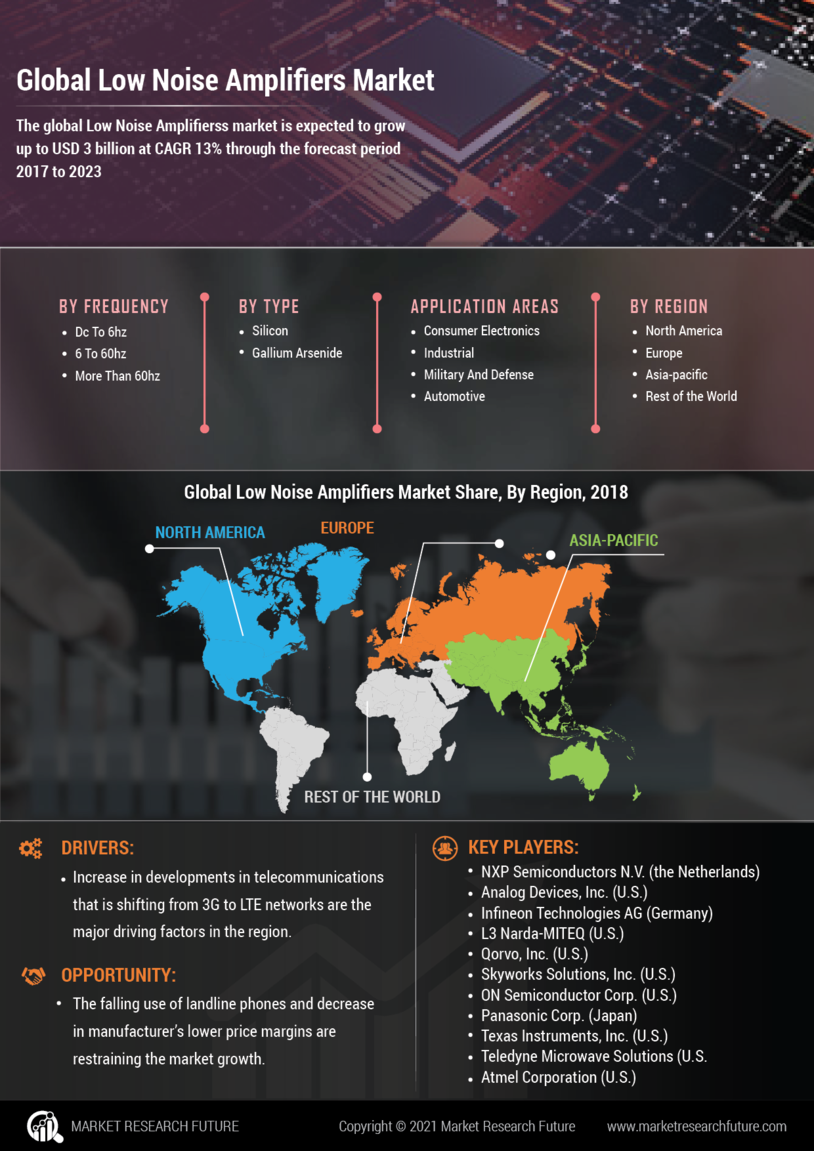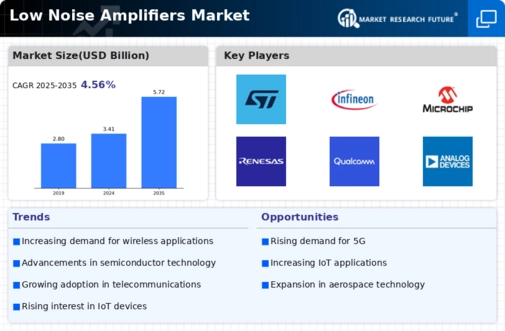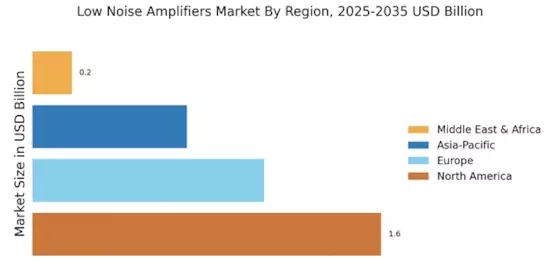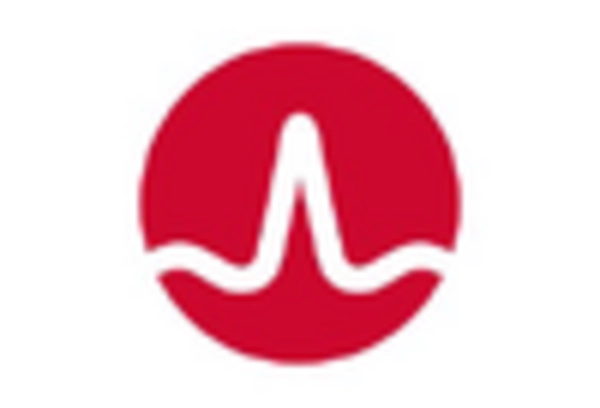Advancements in Semiconductor Technology
The Low Noise Amplifiers Market is significantly influenced by advancements in semiconductor technology. Innovations in materials and fabrication techniques have led to the development of more efficient and compact low noise amplifiers. For instance, the introduction of gallium nitride (GaN) and silicon germanium (SiGe) technologies has enhanced the performance of these amplifiers, allowing for lower noise figures and higher gain. This technological evolution is expected to drive the market forward, as manufacturers seek to integrate these advanced components into their products. The market is projected to witness a compound annual growth rate (CAGR) of around 7% over the next few years, as companies invest in research and development to create next-generation low noise amplifiers that meet the stringent requirements of various applications.
Growing Adoption in Consumer Electronics
The Low Noise Amplifiers Market is benefiting from the growing adoption of low noise amplifiers in consumer electronics. With the proliferation of smart devices, including smartphones, tablets, and wearables, the demand for high-quality audio and video has escalated. Low noise amplifiers play a crucial role in enhancing the performance of these devices by minimizing signal distortion and improving overall sound quality. Market data suggests that the consumer electronics segment is expected to account for a substantial share of the low noise amplifiers market, driven by the increasing consumer preference for high-fidelity audio experiences. As manufacturers continue to innovate and integrate low noise amplifiers into their products, the market is likely to expand, reflecting the changing dynamics of consumer preferences.
Expansion of Wireless Communication Technologies
The Low Noise Amplifiers Market is poised for growth due to the expansion of wireless communication technologies. As the demand for wireless connectivity increases, low noise amplifiers are becoming essential components in various applications, including satellite communications, Wi-Fi, and Bluetooth technologies. The rise of smart cities and the Internet of Things (IoT) is further propelling the need for reliable and efficient communication systems, where low noise amplifiers are critical for maintaining signal quality. Market analysts predict that the wireless communication segment will experience a robust growth trajectory, with an estimated CAGR of 9% in the coming years. This trend underscores the importance of low noise amplifiers in facilitating seamless communication across diverse platforms.
Increasing Demand for High-Frequency Applications
The Low Noise Amplifiers Market is experiencing a surge in demand due to the increasing need for high-frequency applications. Industries such as telecommunications and aerospace are pushing the boundaries of frequency ranges, necessitating the use of low noise amplifiers to enhance signal integrity. As 5G technology continues to expand, the requirement for low noise amplifiers becomes more pronounced, with projections indicating a market growth rate of approximately 8% annually. This growth is driven by the need for improved data transmission rates and reduced latency, which are critical for modern communication systems. Consequently, manufacturers are focusing on developing advanced low noise amplifiers that can operate efficiently at higher frequencies, thereby catering to the evolving needs of various sectors.
Regulatory Support for Enhanced Communication Standards
The Low Noise Amplifiers Market is also influenced by regulatory support aimed at enhancing communication standards. Governments and regulatory bodies are increasingly recognizing the importance of high-quality communication systems for economic growth and public safety. Initiatives to improve telecommunications infrastructure and promote advanced communication technologies are likely to drive the demand for low noise amplifiers. As regulations evolve to support higher bandwidth and lower latency requirements, manufacturers are expected to respond by developing more sophisticated low noise amplifiers. This regulatory environment is anticipated to create new opportunities for growth within the market, as companies align their product offerings with the changing standards and requirements set forth by authorities.
















Leave a Comment